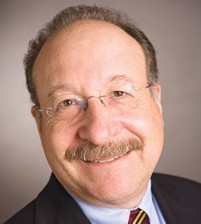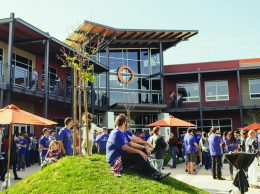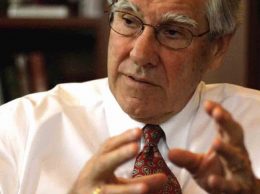Dubroff: Fukushima nuclear disaster doomed Diablo Canyon

Henry Dubroff
Few people on the Central Coast took note of March 11 as the fifth anniversary of Japan’s 2011 Fukushima nuclear disaster.
But you can trace the June 21 announcement that PG&E won’t operate the Diablo Canyon nuclear plant near Avila Beach beyond 2025 to the earthquake and tsunami on the Japanese coast that destroyed four of five nuclear reactors and triggered massive evacuations.
Until that point, PG&E was on a fast track to seek relicensing of the twin reactors for another 30 years beyond their current limit. That plan was stopped dead in its tracks post-Fukushima, when the Nuclear Regulatory Commission ordered another seismic review.
During the delay, the discovery of an earthquake fault close to shore wasn’t the only change the giant utility faced. Indeed, the tectonic plates of energy production and environmental rules began to shift. California’s coastal regulators raised red flags about the release of warm seawater into the ocean — from both nuclear and conventional plants — and the long-term impact on fisheries.
Utility-scale solar fields and wind farms began to populate California, providing both the constant power production that Diablo Canyon’s 2 gigawatt station provides as well as additional power for peak daylight loads that renders extra base power redundant. Costs for wind and solar are so cheap now that it costs less to build them than conventional power plants. There’s no fuel to buy and, compared to nuclear, no radioactive waste.
As California shifted to a cap-and-trade system for carbon emissions, the newest mandates replaced the so-called “non-fossil fuels” standard which favored nuclear power and substituted a much narrower “renewable” standard.
In the end, it was cheaper and, given the Fukushima experience, far less risky for PG&E to shut and decommission Diablo Canyon than to keep it operating.
PG&E gets a giant tax write off, perhaps amounting to 54 cents or more on the dollar, it will take advantage of cheaper solar and wind power coming on stream and it can use marketing — with the full support of environmental groups — to reduce power consumption to offset demand.
By reaching an agreement now, it is likely to get much more favorable regulatory treatment for its massive decommissioning costs. Long-term storage of spent fuel remains an open question as does the future of the plant site.
San Luis Obispo County will have to remap its future and fight hard to get ratepayers to underwrite huge subsidies and the loss of 1,500 workers. But this is not the same San Luis Obispo County that welcomed the plant in the 1980s.
Land values from Santa Ynez to Paso Robles have skyrocketed as vineyards have replaced cattle grazing and software firms are starting to dot the landscape. The impact of wine grapes, agri-tourism and technology is profound and growing. The nuclear power station was looking more and more like a 20th century relic in an emerging 21st century economy.
Still, the transition will be enormous and several people I talked to in San Luis Obispo were in shock at the loss of jobs and support payments that go directly to local governments and schools.
San Luis Obispo clearly needs what I call a “MindBody moment” when it thinks about how it can align its future more closely with companies such as its superstar IPO software maker, and less with the nuclear energy station that defined its past.
Re-invention will take clever partnerships between industry and the tech savvy folks at Cal Poly San Luis Obispo, which has put innovation and entrepreneurship at the forefront of its vision. And more collaboration between Cal Poly’s engineers, Silicon Valley venture capitalists and the post-doctoral researchers at UC Santa Barbara.
One likely result is a growing disparity between gentrified professionals and working folks. The loss of 1,500 technical and high-skilled industrial jobs that might or might not require a college degree is going to carve a hole in the middle class of a county with just 250,000 residents.
Another is the transformation of California’s utility business.
Today, Southern California Edison is still tangling with regulators and consumer advocates over who will pay for the decommissioning of the San Onofre nuclear plant. Southern California Gas is trying to figure out how to regroup after a massive natural gas leak at Porter Ranch in Los Angeles County.
The folks at PG&E have had their own share of troubles. Just a year before Fukushima, a natural gas pipeline explosion in San Bruno killed eight people.
Right now the future of San Luis Obispo County’s economy looks uncertain at best and grim at worst. But with an unemployment rate that’s 3.5 percent, a growing reputation for innovation and eight years to sort things out, a few MindBody moments could turn things around.
• Reach Editor Henry Dubroff at [email protected].











